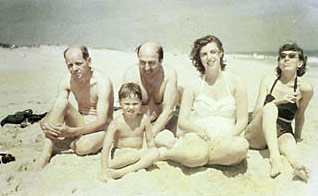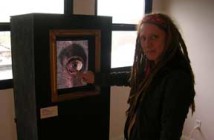According to Reuters, thirty-two works by Jackson Pollock, created between 1946-49, before his meteoric rise to fame, were uncovered in a Long Island warehouse. The works were found by a filmmaker, Alex Matter, who said the paintings were part of his late parents' estate.
Reuters reported Matter as saying: "The works included 22 of the artist's drip paintings and two enamels on paper. The rest, all on board, are unfinished and experimental works that might show how Pollock explored the order of laying down colors."
Although past sales of Pollock's paintings have brought in millions, Matter plans to keep the works in his family, but make them available for historians to study. He also plans to send the paintings on tour next year. Pollock died in 1956 in a car crash, and 2006 marks the 50th anniversary of his death.
In 1945, the critic Clement Greenberg wrote in The Nation that Pollock was "the strongest painter of his generation," and claiming that "he is not afraid to look ugly. All profoundly original art looks ugly at first."
These newly uncovered works, made during those early days of Greenberg's influence, promise to provide much insight into Pollock's strategies and methods. Given that several of them are unfinished color studies, historians may also uncover a relationship between the studies made in the studio, and the now infamous influence Greenberg held over Pollock.
- Left to right: Jackson Pollock, unknown child, Clement Greenberg, Helen Frankenthaler, Lee Krasner. At the beach in 1952. (photographer unknown)
Links:
Reuters




